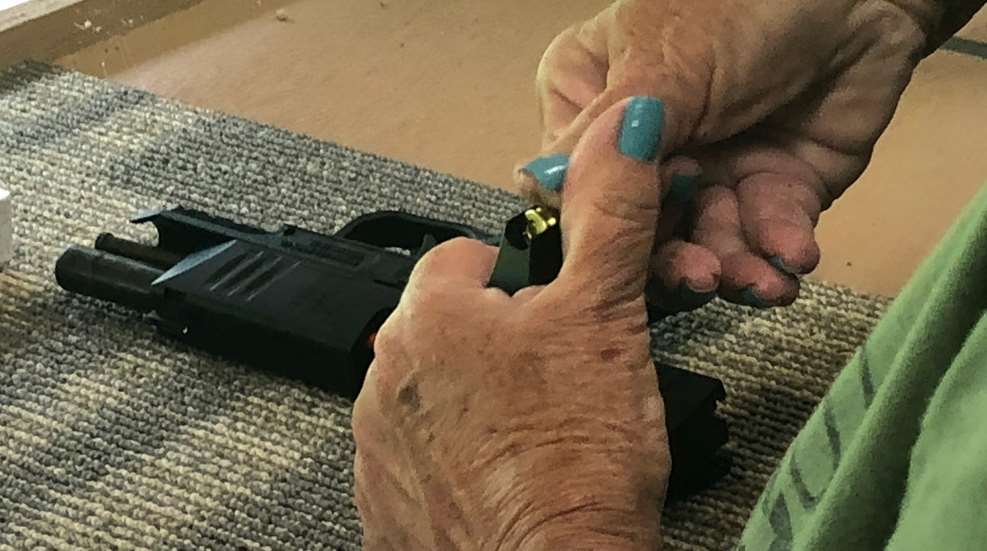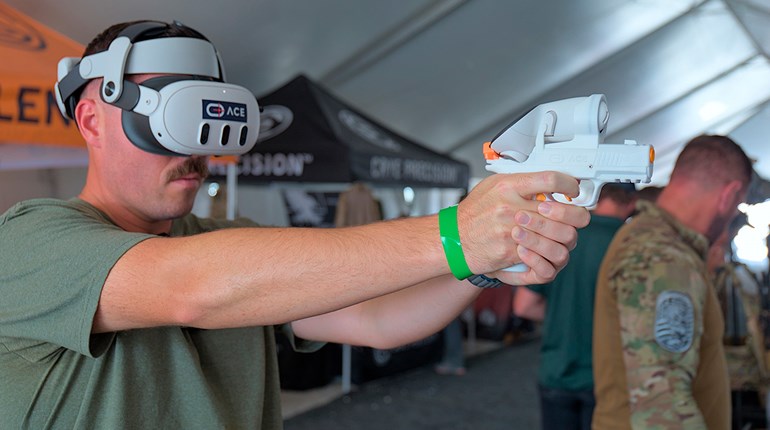
The demographics of individuals seeking firearms training is ever expanding. Most firearms trainers will tell you that they have seen more young adults, women and minority groups than ever seeking to exercise their Second Amendment rights. Senior citizens make up one of the fastest-growing groups seeking firearms training. This demographic requires the instructor to adapt to the needs of these students to ensure their safety while teaching them the knowledge, skills and attitude necessary for safely owning and operating a firearm.
As an instructor, it is your responsibility to keep all your students safe, including those who may need a bit more special attention. Your responsibility of meeting the needs of your students begins long before the class starts. When you advertise a firearms training course, there is usually a way for potential students to register for the class or some type of communication between the individual seeking training and the instructor.
One of the first things I look at when someone registers for my class is his or her age. I also send an e-mail to each student with the details of the class, such as starting time, how to dress for live-fire activities at the range, and asking if there is any special needs or request. If there is no request for special accommodation, I take it upon myself, based on their registration information, to ensure everyone’s needs are met. Many times, the individual is hesitant to admit there may be vision, mobility or any other issues normally associated with age.
The reason it is the instructor’s responsibility to see to the students’ specific needs is because the NRA requires that each student pays attention and participates in the class. This concept is known as “Total Participant Involvement” (TPI). As instructors, we need to create a relaxed atmosphere conducive to learning. Students who have impairments quickly fall behind and as a result, do not get all they could out of the class. This will in turn reflect on the range portion of the training.

Classroom
When I conduct an NRA Firearms Training course, I arrive early to register students as they arrive. I first make sure I have accommodations for those who reached out to me with any special needs request. The most common issues I have encountered with senior students is vision and hearing. I have found that, in general, seniors will tell you about hearing issues but not vision problems. I normally do not learn of vision problems after the class has started and everyone has settled into their seats.
Even though I have open seating and do not assign seats, I make it a point to place students who have let me know in advance they have impairments in the front row. I am also proactive and try to head off any problems by looking at the students’ ages on my roster. If there are students in their late 60s, 70s or 80s, I make sure they have a front row seat. The oldest student I had in a firearms training class was 92 years old—and was a first-time gun owner!
There are other age-related issues beyond hearing and vision, like mobility—bad backs, legs and knees. Make sure that your classroom is easily accessible to people with lower extremity problems. Many classrooms have the common folding metal chairs. This can be torture for someone with a bad back. Try to have some extra seat cushions handy for those with back issues. You can also e-mail everyone and tell them ahead of time that the chairs are metal and let them know to bring a cushion if they so desire.
The last issue you need to consider regarding your classroom and senior students is the location of the bathroom. Let’s face it, the older we get, the more we have to “go.” There is usually nothing you can do about the bathroom situation. Just make sure that it is clean and well stocked. Also, allow students extra time on breaks to use the facilities. Your senior students usually need more time, especially if the bathroom is located in a different area than your classroom.
Gun Range
The gun range comes with its own challenges. The same vision, hearing and mobility issues are only amplified when you get to the range. It is easier to make adjustments on the fly when you only discover a disability at the beginning of the class, and if you are only in the classroom. Adjustments to the range portion of your training takes some planning. Always have a contingency plan for the range when setting up your class.
Mobility. If your student cannot get to the range because of a lengthy walk, he or she cannot get trained or certified if a live-fire activity or qualification is required for that particular training or certification. The easiest way to deal with this is to transport your student from the parking area to their shooting table by way of a golf cart, if one is available. If a golf cart is not available, try to get them to park their vehicle as close to the shooting area as possible. Always ask the range owner if he or she could make accommodations such as using another entrance that might only be available to employees, or even coordinating with the Range Safety Officer (RSO). Many times, the RSO will ask shooters at a table closest to the parking area to move down a few lanes to leave the “easiest” accessible tables available if any customers arrive and need that convenience. I have found that owners, managers and RSOs at gun ranges are more than happy to assist.
Vision. One way to deal with vision problems is to move the targets closer so targets are more easily seen, and the shooter is more likely to have success. Another trick is to use different color targets. I have found that some senior students see red targets best, but for others it’s blue or white. Everyone’s eyes are different and we all see colors differently.
Hearing. Depending on the level of impairment, if someone cannot hear very well, they cannot hear the range commands, which can result in a serious accident. If you have a student that has difficulty hearing, make sure you stay close to him or her. You might have to speak louder than you would normally speak at the range. You can also have an understanding with the student with a series of shoulder taps along with the verbal command. For example, one tap on the right shoulder means “cease fire,” two taps on the right shoulder could mean “fire,” three taps on the shoulder could be for “load and make ready”, etc.
Some may consider it wrong to assume a senior student has impairments or has special needs, but I would rather be safe than sorry. I will be the first to admit I have had senior students that were in better shape than I, but once the class starts and you have not made contingency plans for any issues or special needs, you could find yourself in a bind. It is a good idea to follow the Boy Scout Moto: Be Prepared!
By not being proactive, it can cause you added stress and can be unfair to the rest of the students in class. Being unprepared for age-related issues can cause delays in training and it can put an undue burden on the other students in the class. Many of your students may feel compelled to assist senior students. Normally this is not an issue because people who shoot usually have no problem helping others, especially when it comes to firearms and gun ownership.














































